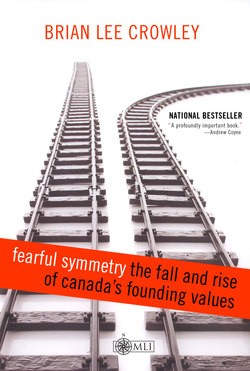Читать книгу Fearful Symmetry - the Fall and Rise of Canada's Founding Values - Brian Lee Crowley - Страница 10
На сайте Литреса книга снята с продажи.
How the Future Will Differ from the Past
ОглавлениеCan this really be Canada, where not so many years ago a party won one of the biggest parliamentary majorities in history on the slogan “Jobs, jobs, jobs”?
Yes, because that was then and this is now. When Brian Mulroney and his Tories swept to power in 1984, it was the year that, on David Foot’s account, the last members of the Boomer generation (those born in 1966) turned eighteen and began looking for work. The entire Boomer generation was now in the workforce or was at least of working age.
Alongside that population change came huge political change, particularly in Quebec–Canada relations; this book describes how these two forces combined to produce many of the vast changes Canada has undergone in recent decades. The Quebec state, for example, was at the early stages of its efforts to prise open the province’s private economy for French-speakers. That effort, combined with decades of bad policy in the province (which I describe in detail in Chapters 3 and 7) had undermined growth. Meanwhile, the patriation of the Constitution over Quebec’s objections in 1982 had given the nationalist movement a new grievance with which to excoriate all things Canadian. The competition between Ottawa and Quebec City for the loyalty of Quebeckers drove a vast growth in the size of the state at all levels in Canada.
Today, while the problem of Quebec nationalism remains unresolved, one of its main props, the federal-provincial battle over the Boomers and their place in the economy, is about to enter a quite different phase.
Again we must not allow the temporary circumstances of the downturn of 2009 to obscure the long-term trends. Whether growth returns in 2009, 2010, or 2011, while it matters enormously to us in those years, is only a question of timing. The labour shortages that were so evident in 2006 to 2008 will return because they are driven by deep forces that transcend economic cycles. Unemployment before 2009 was rapidly becoming yesterday’s issue, and the pace of that change will accelerate when today’s downturn is only a fading memory. When that happens, plant closures and mortgage defaults will disappear from the headlines, and we will again find that newspaper accounts of labour shortages jostle for space with stories about declining student numbers in the public schools. As a legacy of the last half century’s political battles, however, we will still find ourselves lumbered with a series of policies designed to mop up surplus labour at a time when we will need to ferret out every worker we can find. For example, the EI system still pays people not to work for long periods of the year, especially in seasonal industries, and thanks to the miracle of regionally extended benefits, pays them extra to move to areas of high unemployment, rather than paying them to move to places where the jobs are. It also discourages education, because students are not eligible for EI. The number of teachers in the public schools rises as student numbers fall. The part of the economy where employment is growing the fastest by some measures is still the public sector, and the pace is picking up, driven in part by stimulus packages. Pressure is rising for governments to make it easier to get welfare and EI again.
The period of falling unemployment that preceded the downturn that began in 2008 was no mere momentary economic conjuncture, a high in the economic cycle which has now turned and is dragging us down again. A period of sustained and indeed growing labour shortages is not a possibility, nor a probability, but a certainty. We will find our growth constrained by our inability to find workers. Inflation will be an ever-present danger in these tightening labour markets, and that means a vigilant Bank of Canada will keep its finger tight on the interest rate trigger. The standard of living of Canadians will be lower than it needs to be at just the time we will need to find ways to pay for the retirement of all those Boomers.37 According to the federal Department of Finance, by around 2030 or so, annual GDP (gross domestic product) will be about 14 per cent lower than it would have been if we were to continue with the (unimpressive) per person growth rates of recent decades. That is a stunning loss of potential national wealth at a time when the claims of older Canadians, particularly on the health care and retirement security systems, will be on the rise. While our standard of living will continue to rise, that rise will be anemic compared to what it could be, and the risk is real that we will fall even further behind the long-term economic performance of our neighbours to the south, whose economic recovery is also only a matter of time. Nothing about this is set in stone, however; we have the choice to do things differently.
